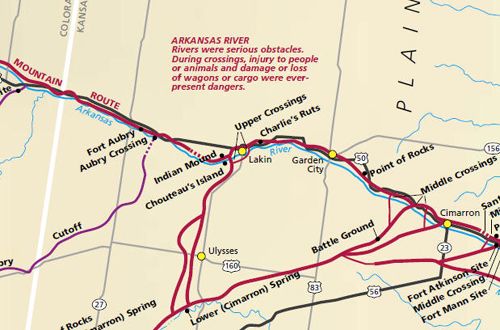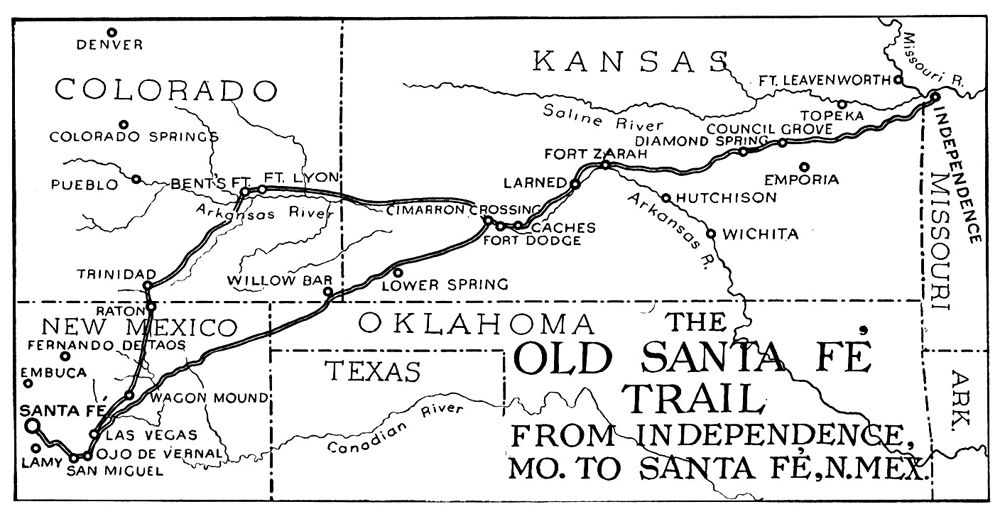
Where the Prairies Whisper History: Hamilton County and the Enduring Legacy of the Santa Fe Trail
In the vast, unyielding expanse of western Kansas, where the sky stretches endlessly and the wind hums an ancient tune across the prairie, lies Hamilton County. At first glance, it might appear to be just another tranquil agricultural landscape, a patchwork of fields and scattered farmsteads, far removed from the bustling arteries of modern commerce. Yet, beneath this veneer of quietude, Hamilton County holds a profound and tangible connection to one of America’s most iconic and arduous trade routes: the Santa Fe Trail. Here, the very earth bears the scars and whispers the tales of ambition, endurance, and the relentless march of westward expansion.
The Santa Fe Trail, a roughly 900-mile artery stretching from Franklin (later Independence), Missouri, to Santa Fe, New Mexico, was far more than just a path; it was an economic lifeline, a cultural conduit, and a symbol of Manifest Destiny in the early to mid-19th century. From its inception in 1821 with William Becknell’s pioneering journey, the trail facilitated a lucrative trade in furs, textiles, and manufactured goods, forging connections between the nascent American frontier and the distant Mexican territories. It was a route fraught with danger – from hostile Native American encounters to the brutal whims of nature – yet it drew thousands of traders, soldiers, and adventurers seeking fortune and a new life.
The Cimarron Cutoff: A Perilous Shortcut

As the trail matured, two primary routes emerged: the Mountain Route, longer but safer with more reliable water sources, and the Cimarron Cutoff. It is the latter, the more direct but notoriously perilous Cimarron Cutoff, that carves its indelible mark across Hamilton County. This shortcut offered the promise of shaving crucial miles off the journey, a tempting prospect for weary travelers eager to reach their destination. However, this efficiency came at a steep price. The Cimarron Cutoff traversed some of the most arid and challenging terrain on the entire trail, notorious for its scarcity of water, extreme temperatures, and increased vulnerability to Native American raids.
Hamilton County, situated precisely where the Cimarron Cutoff plunged into its most unforgiving stretch, became a critical, if terrifying, segment for those who chose this path. Here, the Arkansas River, a vital if often fickle lifeline, served as a crucial crossing point before the trail veered southwest into the dry, desolate plains that earned the name "Jornada del Muerto" or "Journey of Death" for its lack of water. Travelers would often "noon" or "camp" along the river in what is now Hamilton County, gathering strength and preparing for the arduous journey ahead, knowing full well that their next reliable water source could be days away.
Echoes in the Landscape: The Enduring Ruts
What makes Hamilton County’s connection to the Santa Fe Trail so uniquely powerful are the physical remnants that persist to this day. Unlike many sections of the trail that have been obliterated by modern development or agricultural practices, portions of the original wagon ruts in Hamilton County remain remarkably preserved. These are not merely faint depressions; in some areas, they are deep, parallel furrows, carved by the iron-rimmed wheels of thousands of wagons and the hooves of countless oxen and mules over decades.
Standing beside these ruts is an almost spiritual experience. One can almost hear the creak of wagon wheels, the shouts of teamsters, the lowing of cattle, and the murmur of desperate prayers for water. The sheer depth and breadth of these scars on the land speak volumes about the volume of traffic and the immense effort expended. They are a silent testament to human perseverance against overwhelming odds. The remoteness of Hamilton County, coupled with the foresight of local landowners and preservationists, has protected these historical treasures, offering a window directly into the past.
The Human Element: Stories of Endurance and Conflict
The story of the Santa Fe Trail in Hamilton County is, at its heart, a human story. It’s the tale of traders like Josiah Gregg, whose meticulous journals, Commerce of the Prairies, provide invaluable insights into the daily realities of trail life. Gregg, a prominent figure on the trail, meticulously documented the hardships: the scorching sun, the sudden blizzards, the constant threat of thirst, and the ever-present danger of raids from Native American tribes fiercely defending their ancestral lands.
"Many a traveler, after a weary march under the scorching sun," Gregg wrote, "has been ready to give up his last hope of salvation for a draught of the limpid stream." This sentiment would have resonated deeply with anyone traversing the Cimarron Cutoff in Hamilton County, where water sources were few and far between. The challenge was not just physical; it was psychological, a test of will and spirit.

For the Native American tribes – primarily the Comanche, Kiowa, and Apache – the presence of the Santa Fe Trail was a double-edged sword. While it brought opportunities for trade, it also brought encroachment, disease, and conflict. The prairie was their home, their hunting grounds, and they viewed the caravans as invaders. Hamilton County, with its isolated terrain, was often a flashpoint for these encounters, adding another layer of danger for the passing caravans. The trails were sometimes stained with blood, a stark reminder of the clash of cultures and the brutal realities of westward expansion.
Hamilton County Today: Guardians of History
Today, Hamilton County, with its county seat of Syracuse, embraces its unique historical identity as a guardian of the Santa Fe Trail’s legacy. Local historical societies and dedicated individuals work tirelessly to preserve the remaining ruts, mark historical sites, and educate visitors about this vital chapter in American history. The Santa Fe Trail Association and the National Park Service also play crucial roles in identifying, protecting, and interpreting these significant sites.
While not a bustling tourist destination, Hamilton County offers a profound experience for those seeking a deeper connection to the past. Visitors can explore designated public access points to view the ruts, imagining the hardships and triumphs of those who passed this way almost two centuries ago. The landscape itself, largely unchanged, speaks volumes. The quiet solitude allows for reflection on the courage, resilience, and sometimes tragic consequences of a nation’s journey westward.
The local communities understand the importance of this heritage. Farmers carefully cultivate their fields around the historical ruts, recognizing them not as obstacles but as sacred lines connecting them to a foundational past. Schools incorporate local Santa Fe Trail history into their curricula, ensuring that future generations understand the sacrifices and achievements that shaped their region and nation.
Conclusion: A Timeless Whisper
Hamilton County, Kansas, stands as a powerful testament to the enduring legacy of the Santa Fe Trail. More than just a dot on a map, it is a living museum, where the prairie winds still seem to carry the echoes of creaking wagons, determined voices, and the dreams of a bygone era. The preserved ruts are not merely historical artifacts; they are tangible threads connecting us directly to the human spirit that dared to brave the unknown, to forge a path across a continent.
In an age of instant communication and rapid travel, the story embedded in the soil of Hamilton County reminds us of a time when every mile was a hard-won victory, every journey an epic adventure. It’s a story of commerce, conflict, and sheer human will, etched into the very landscape, waiting for those who pause to listen to the timeless whisper of history. Hamilton County may be quiet, but its silence is filled with the resounding narrative of the Santa Fe Trail, a legacy it proudly continues to safeguard for generations to come.


